Bristle Nose Plecos (Ancistrus sp.)
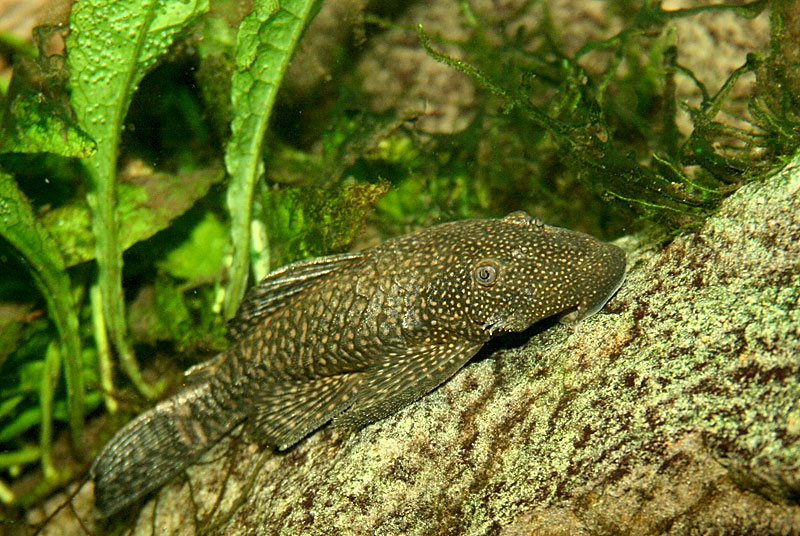 Female bristle nose pleco in my 240G Lake Tanganyika setup.
Well, here finally you see me braking with the ideal of a pure Lake Tanganyika stocking list, by introducing bristle nose plecos from South America. The reason I am breaking with the purist's approach is that BN plecos are simply too useful a fish not to have in such a big tank. In fact, they are useful to have in any tank, and I don’t think I am actually keeping any tanks that don't have at least one BN pleco in there. The 240G houses at least a dozen and they are breeding prolifically, although few if any of the fry seem to survive in the main tank. Some months ago I pulled about 30 little ones out of the sumps though! In general, BN plecos tend to reproduce readily in the tank environment. Also, while some plecos depend on the presence of wood in the tank to keep their digestive system going, BN plecos do not seem to have this desire. In this tank, as well as in previous setups I had, the BN plecos never had access to wood and this doesn't seem to stop them from reaching a ripe old age and producing plenty of fry.
Female bristle nose pleco in my 240G Lake Tanganyika setup.
Well, here finally you see me braking with the ideal of a pure Lake Tanganyika stocking list, by introducing bristle nose plecos from South America. The reason I am breaking with the purist's approach is that BN plecos are simply too useful a fish not to have in such a big tank. In fact, they are useful to have in any tank, and I don’t think I am actually keeping any tanks that don't have at least one BN pleco in there. The 240G houses at least a dozen and they are breeding prolifically, although few if any of the fry seem to survive in the main tank. Some months ago I pulled about 30 little ones out of the sumps though! In general, BN plecos tend to reproduce readily in the tank environment. Also, while some plecos depend on the presence of wood in the tank to keep their digestive system going, BN plecos do not seem to have this desire. In this tank, as well as in previous setups I had, the BN plecos never had access to wood and this doesn't seem to stop them from reaching a ripe old age and producing plenty of fry.
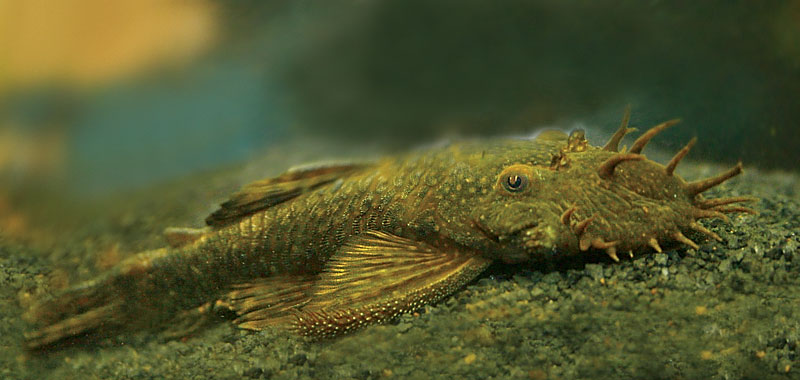 Male bristle nose pleco in my 240G Lake Tanganyika setup.
BN plecos in my experience are the ideal tank clean-up crew. They only grow to about 5" adult size and although they will readily eat pellet, flake and tablet food when available, they seem to enjoy algae as their favorite food throughout their whole lifespan. This puts them in stark contrast to what is generally available as 'common pleco' in your local fish store. The true common pleco Hypostomus punctatus), already grows to about double the size of the Bristle Noses, but nowadays sail fin plecos (Pterygoplichthys gibbiceps) and similar sucker mouth catfish that are true tankbuster growing to 17" and more are also frequently sold under the 'common pleco' moniker.
Sadly, most beginners either have no idea what they are getting into when buying a common pleco or they adopt the attitude of the author of the Planetcatfish catfish of the month article of July 1997, who writes:
Male bristle nose pleco in my 240G Lake Tanganyika setup.
BN plecos in my experience are the ideal tank clean-up crew. They only grow to about 5" adult size and although they will readily eat pellet, flake and tablet food when available, they seem to enjoy algae as their favorite food throughout their whole lifespan. This puts them in stark contrast to what is generally available as 'common pleco' in your local fish store. The true common pleco Hypostomus punctatus), already grows to about double the size of the Bristle Noses, but nowadays sail fin plecos (Pterygoplichthys gibbiceps) and similar sucker mouth catfish that are true tankbuster growing to 17" and more are also frequently sold under the 'common pleco' moniker.
Sadly, most beginners either have no idea what they are getting into when buying a common pleco or they adopt the attitude of the author of the Planetcatfish catfish of the month article of July 1997, who writes:
"Growing gibbiceps shouldn't be a problem for most 3ft or larger aquariums as most shops will happily swap a well-fed healthy 8" gibby for a scrawny 1-2" juvenile. The dealer gets a nice fish to sell; the aquarist gets the fun of raising another of these fish."In my humble opinion that was a myth even in 1997, and today the number of enthusiasts who own tanks large enough to adequately house these fish as adults is negligible in comparison to the vast number of beginners who thoughtlessly buy them when little, and are desperate to get rid of them when they outgrow their tank. As a result, most pet stores won't touch a large pleco with a barge pole even if you offer them money to take the fish back. Just recently I relieved a neighbor of two huge plecos of at least 15" that she had taken over together with a used 55G tank. She had been around all the pet stores in the area to find them a new home without any luck. They were auctioned off at the OCA Extravaganza, which seemed to give them by far the best chance of finding a good home. Together they sold for under $10, which shows you the demand for this type of fish. The Catfish of the Month July 1997 hits the nail on the head though when he talks about the huge amount of waste common plecos produce. They have a remarkable digestive system that seems to turn 1g of food into 10g of waste, and unfortunately their appetite for algae seems to be restricted to youngsters while adult fish prefer flake, pellet and tablet food.
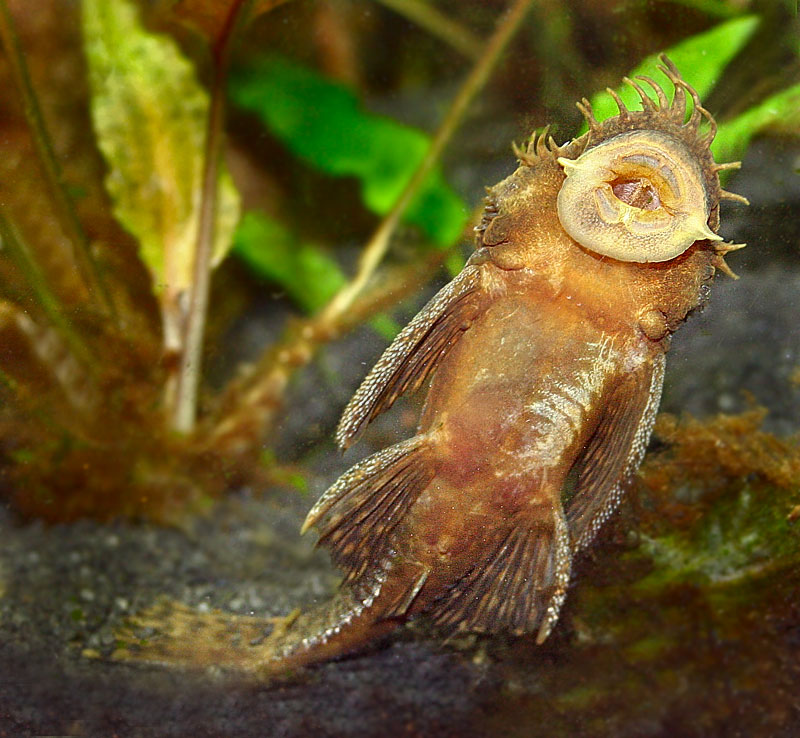 Underside of a male bristle nose pleco in my 240G Lake Tanganyika setup.
All around, I can not recommend common plecos as suitable aquarium fish for anybody but dedicated enthusiasts who have large tanks available to provide these fish with a permanent home. And why go through the hassle of common plecos, when the perfect algae grazing, tank cleaning and mid sized community fish is readily available in form of our bristle nose pleco? These fish are also frequently named bushy nose pleco and similar, and their species name is pretty much undeterminable due to a plethora of undistinguishable species. Yet they all belong to the genus ancistrus and have the qualities we desire - and the males have bristles on their nose. So when looking for a clean-up pleco, make sure to get the ones with the bristled males, and you'll get a small, algae eating, tank cleaning ancistrus, while the ones where males don't have bristles are most likely tank busting poop-machines.
Underside of a male bristle nose pleco in my 240G Lake Tanganyika setup.
All around, I can not recommend common plecos as suitable aquarium fish for anybody but dedicated enthusiasts who have large tanks available to provide these fish with a permanent home. And why go through the hassle of common plecos, when the perfect algae grazing, tank cleaning and mid sized community fish is readily available in form of our bristle nose pleco? These fish are also frequently named bushy nose pleco and similar, and their species name is pretty much undeterminable due to a plethora of undistinguishable species. Yet they all belong to the genus ancistrus and have the qualities we desire - and the males have bristles on their nose. So when looking for a clean-up pleco, make sure to get the ones with the bristled males, and you'll get a small, algae eating, tank cleaning ancistrus, while the ones where males don't have bristles are most likely tank busting poop-machines.
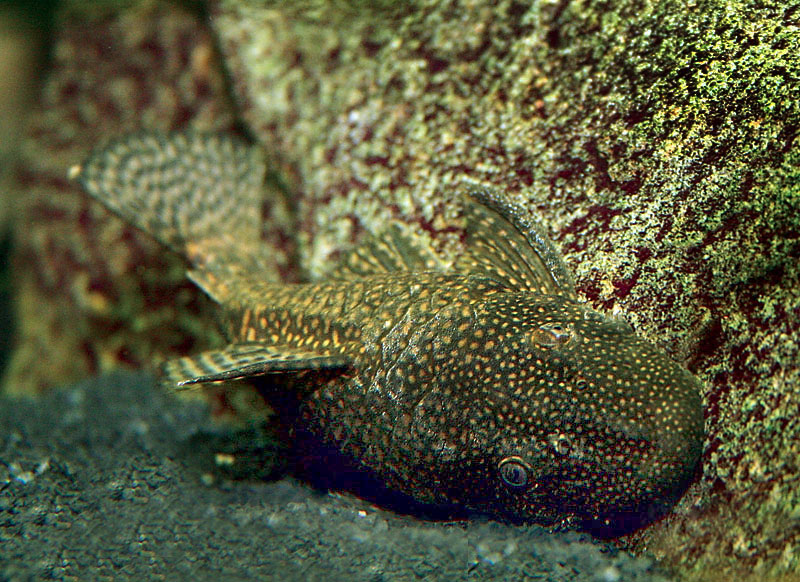 Female bristle nose pleco in my 240G Lake Tanganyika setup.
Female bristle nose pleco in my 240G Lake Tanganyika setup.
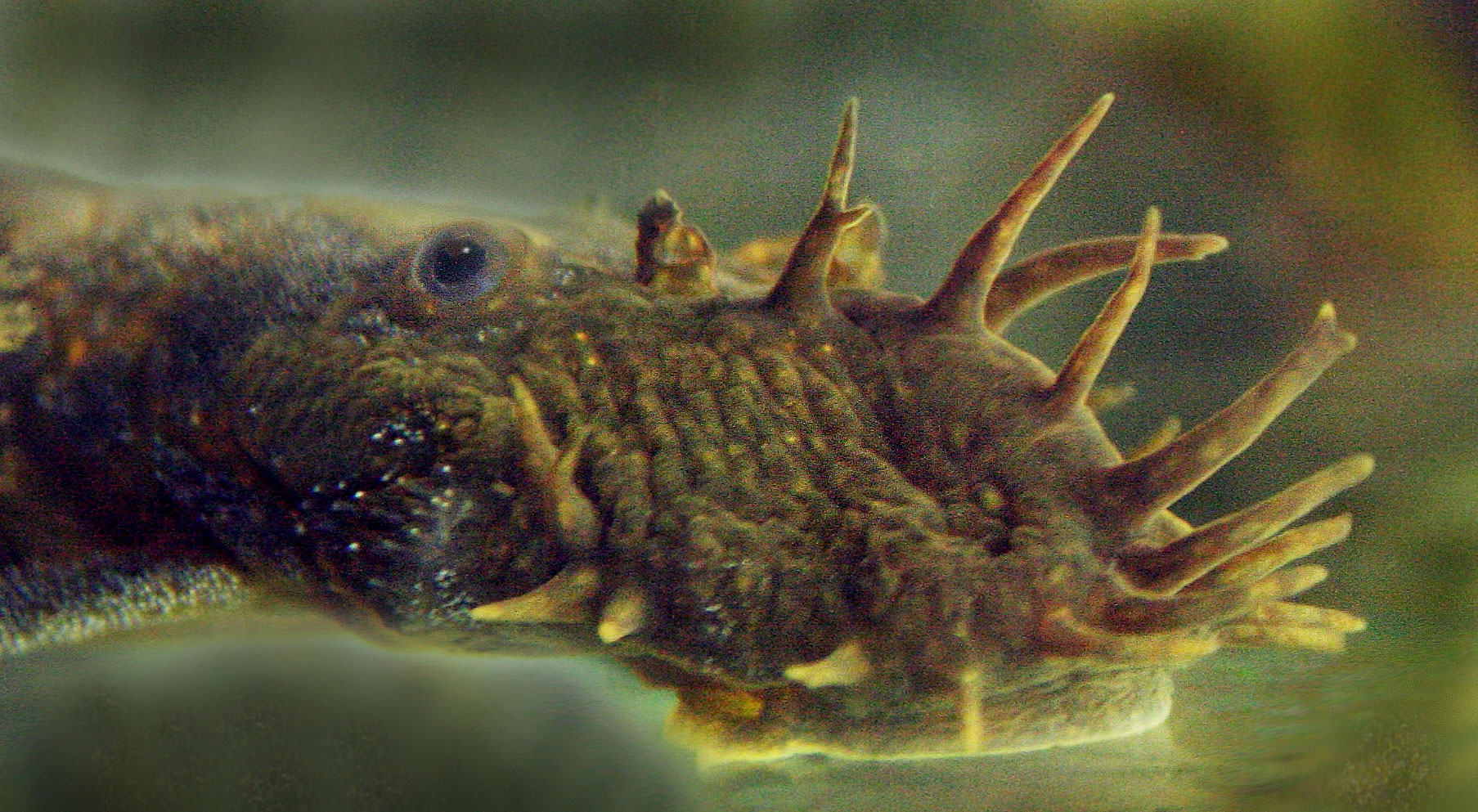 Portrait of a male bristle nose pleco in my 240G Lake Tanganyika setup.
Portrait of a male bristle nose pleco in my 240G Lake Tanganyika setup.
Leave a Reply
You must be logged in to post a comment.
